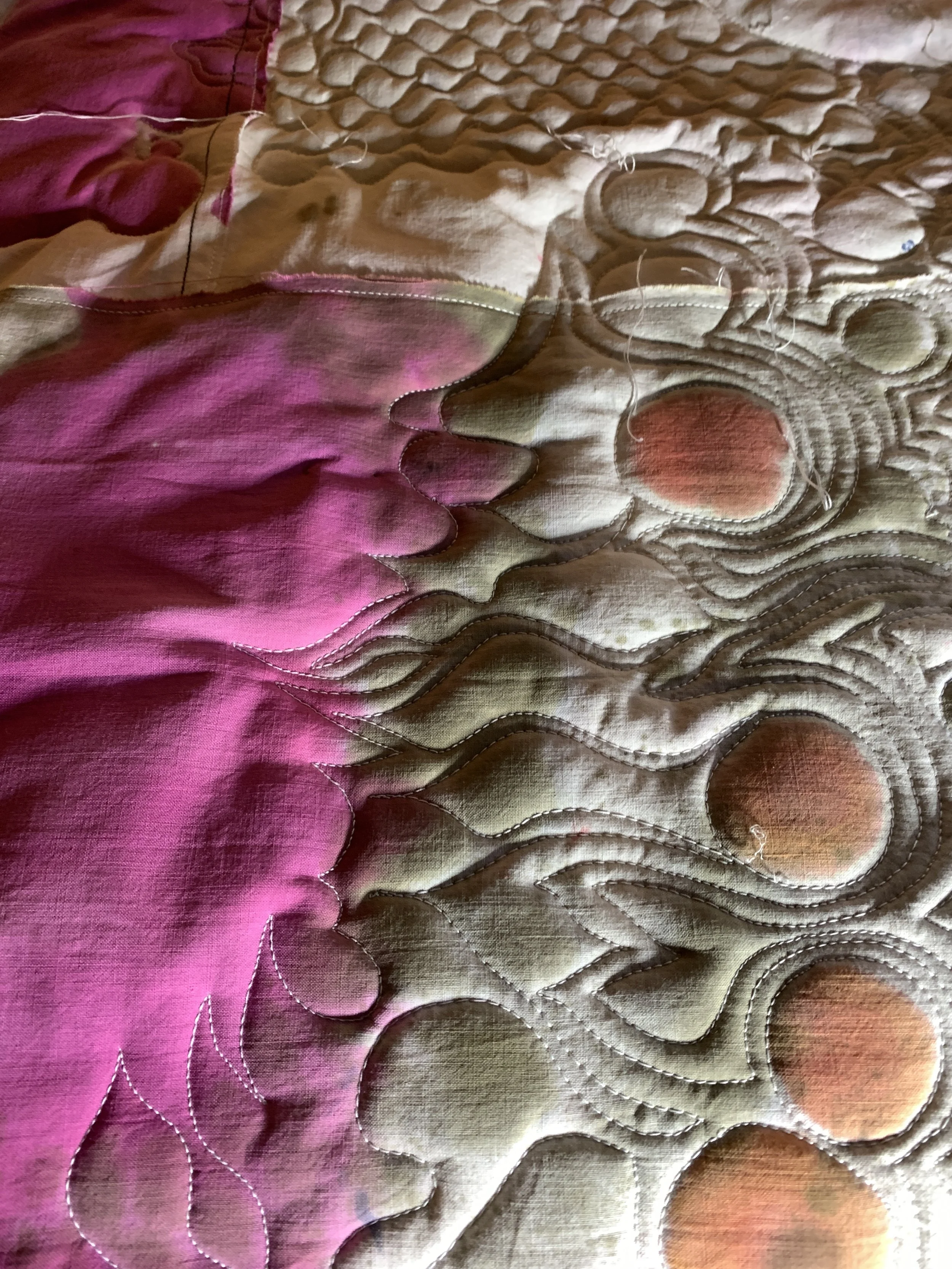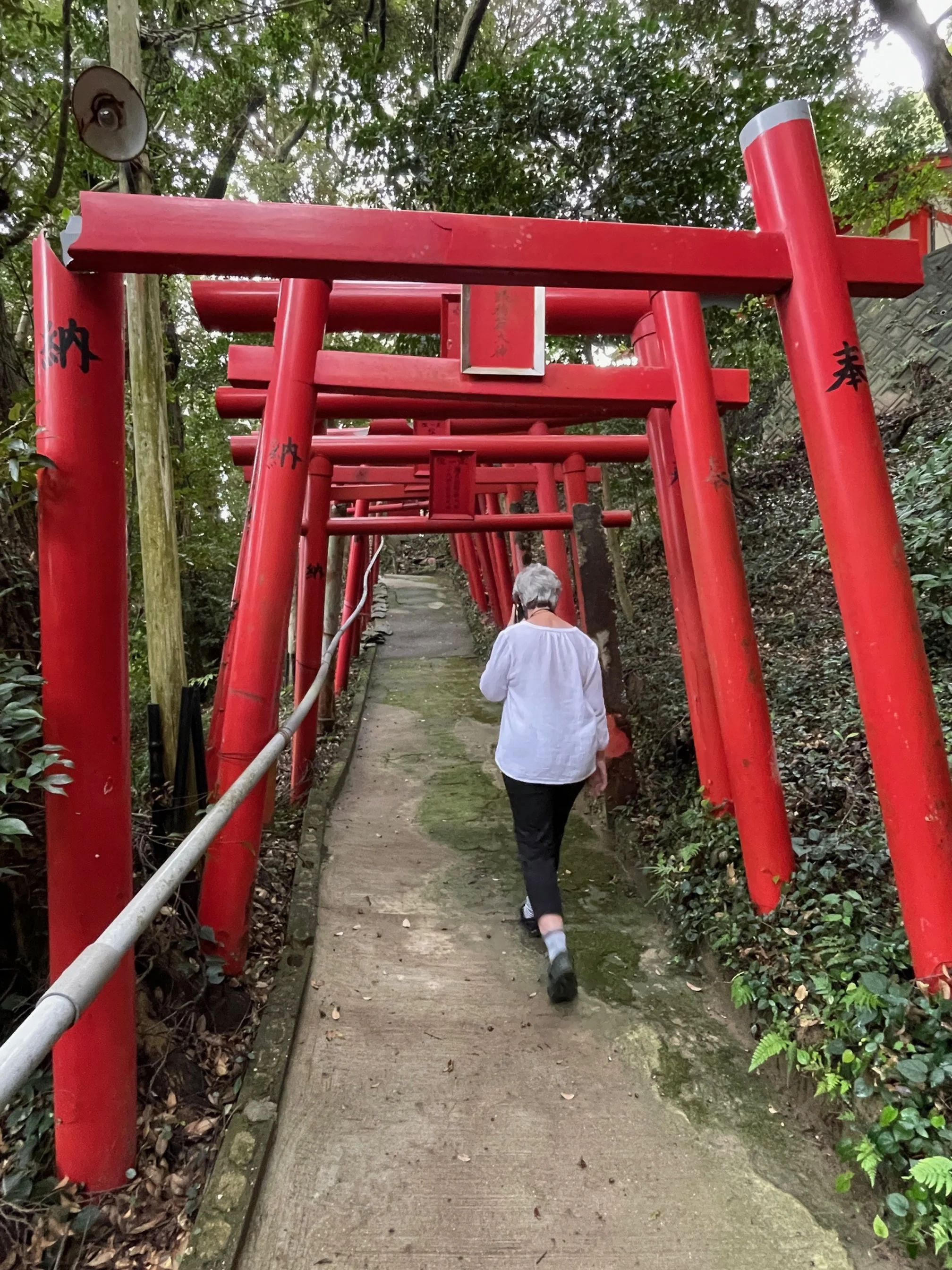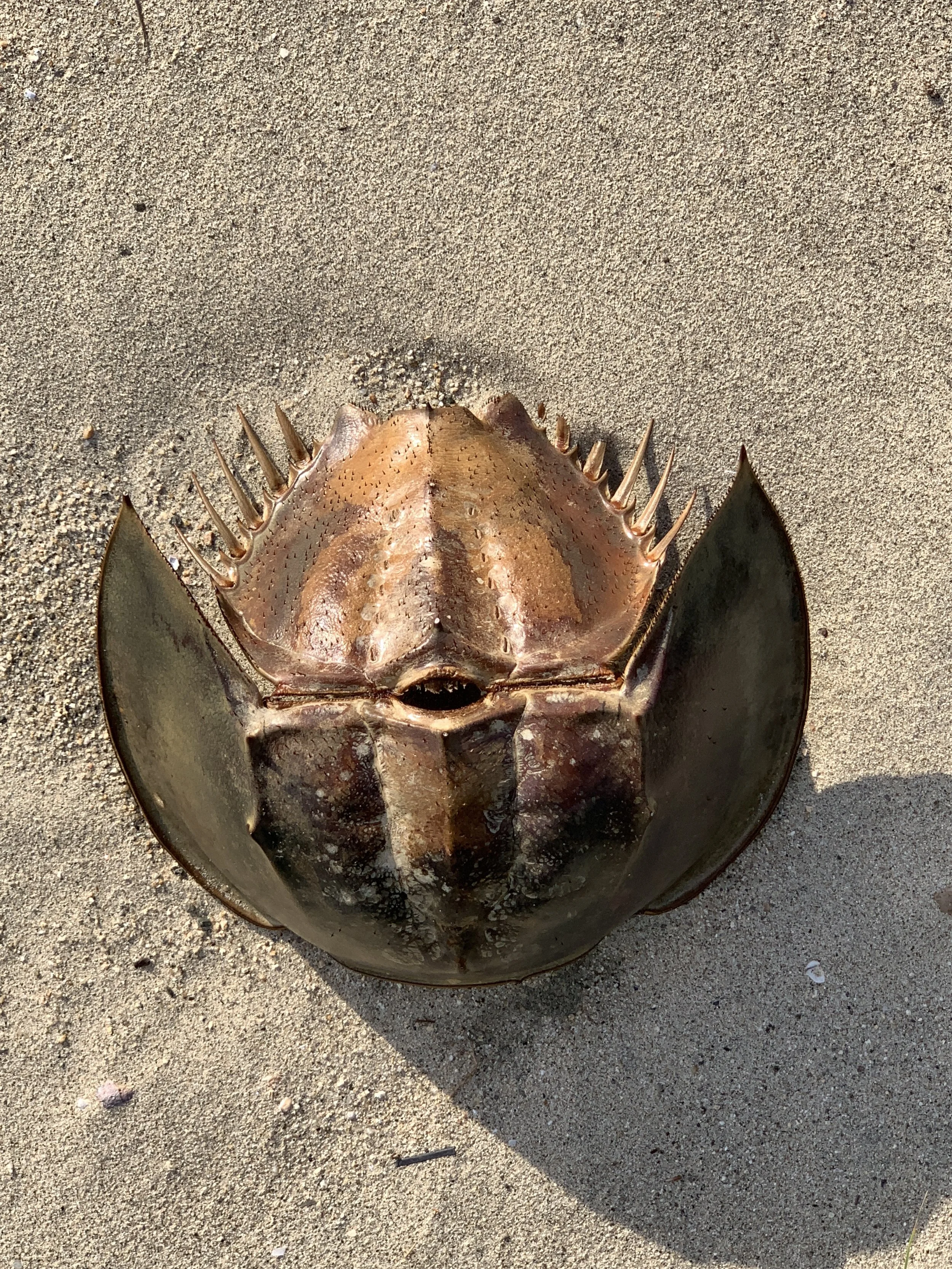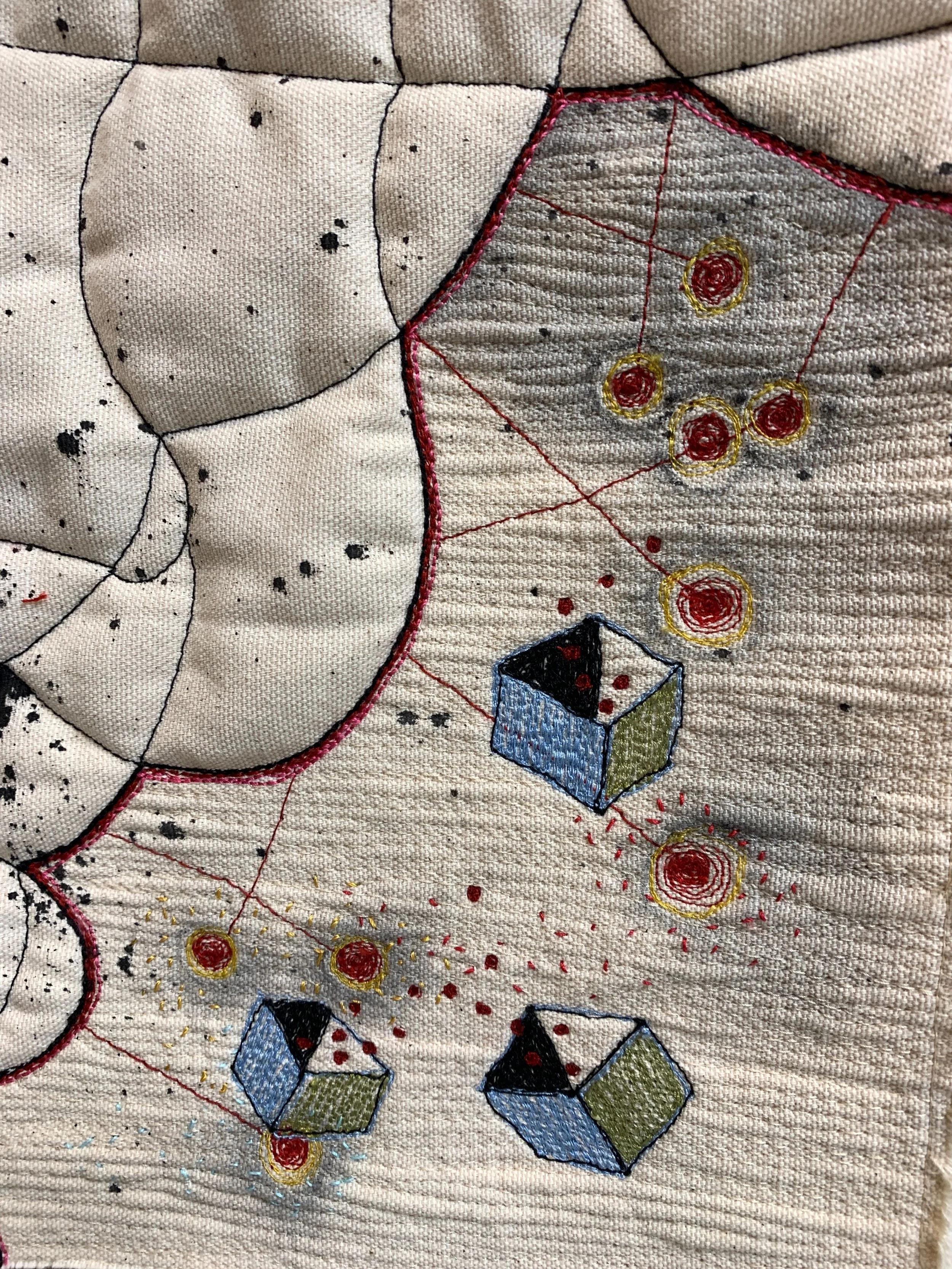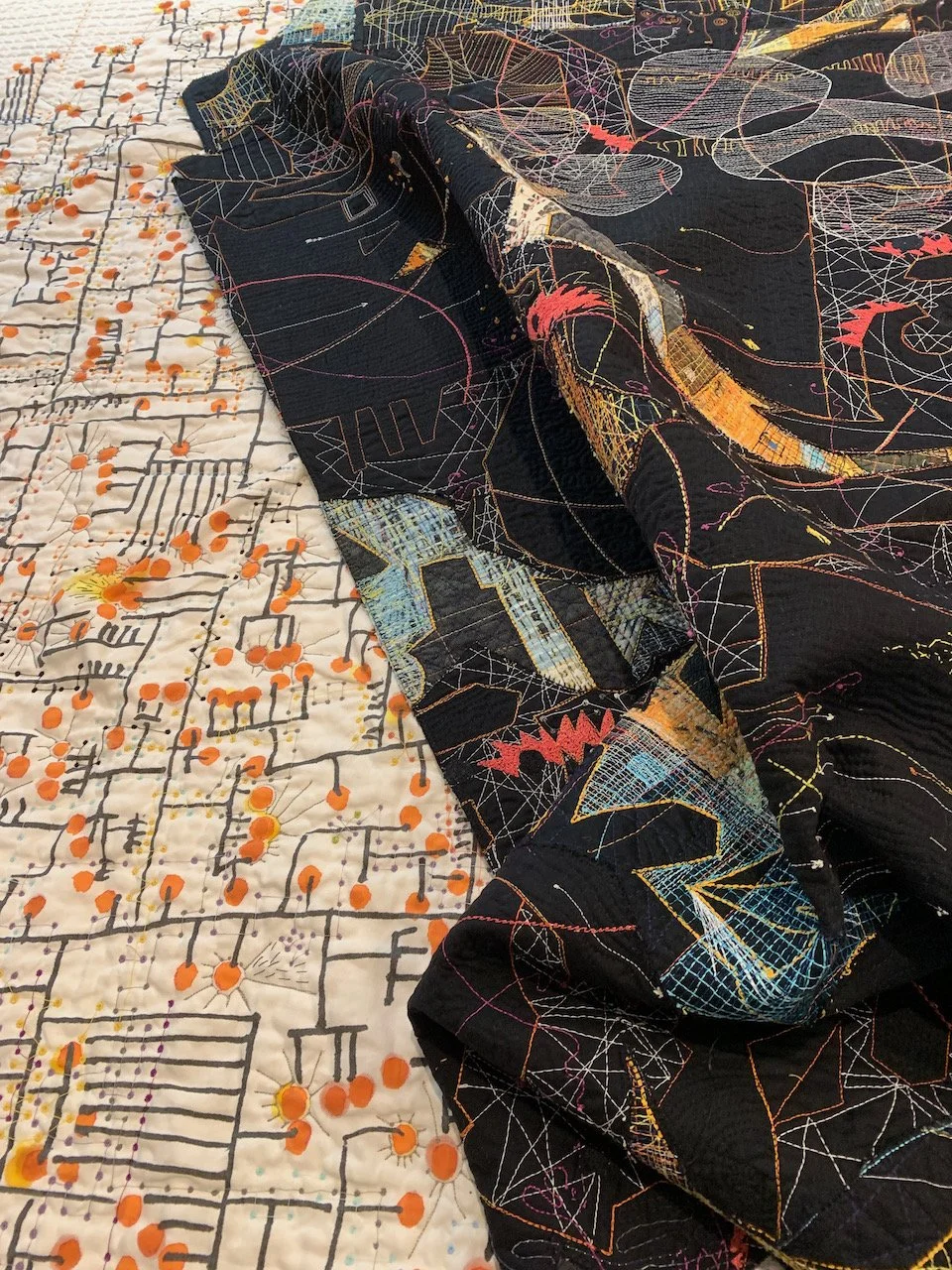I packed up 26 pieces for a solo show at my alma mater, Southern Illinois University, this past week.
And then dropped them off.
Southern Illinois University Gallery in Carbondale, Illinois will exhibit Stitched Intent beginning in September.
The gallery was empty, the University was just opening for the Fall semester. I saw no students, no bustle, no gathering tide of excitement. Just some locked buildings with the promise of education within.
The show will go on. Some students will trickle in, social distancing will be a prime directive. Social media will be used to promote the show. And yet it seems a void—a fancy storage place for the work.
We are living history right now. People will ask us ten years from now what it was like to live during this void. Empty movie theaters, vacant museums, void concert venues, disabled restaurants, echoing university lecture halls, day care centers without children’s voices and on and on and on. Our president has declared victory. But I see risk and a profound challenge ahead.
It is artists we look to when searching for answers to questions that can’t be voiced. It is the artist who must translate the unspoken. Musicians, painters, dancers, quilters, embroiderers, actors and writers are all stepping up to fill the void. There is a force that propels them to translate, transfer and transport our minds.
I chop up old work to create new work. I think it is a way to renew my sense of beginnings. I can let go of expectations. Throw away the idea of permanency. Sometimes the process begets failure, other times it opens new pathways in my thinking. I think that could be the silver lining in this challenging time. We will all have to see with new eyes. We’ll need new leaders and new ways of communicating with each other.
This is what happens when I cut up old work.
My art sustains me. The work provides an escape, nourishes my fretting brain and propels me to greater depth.
I am grateful for health and hope.





